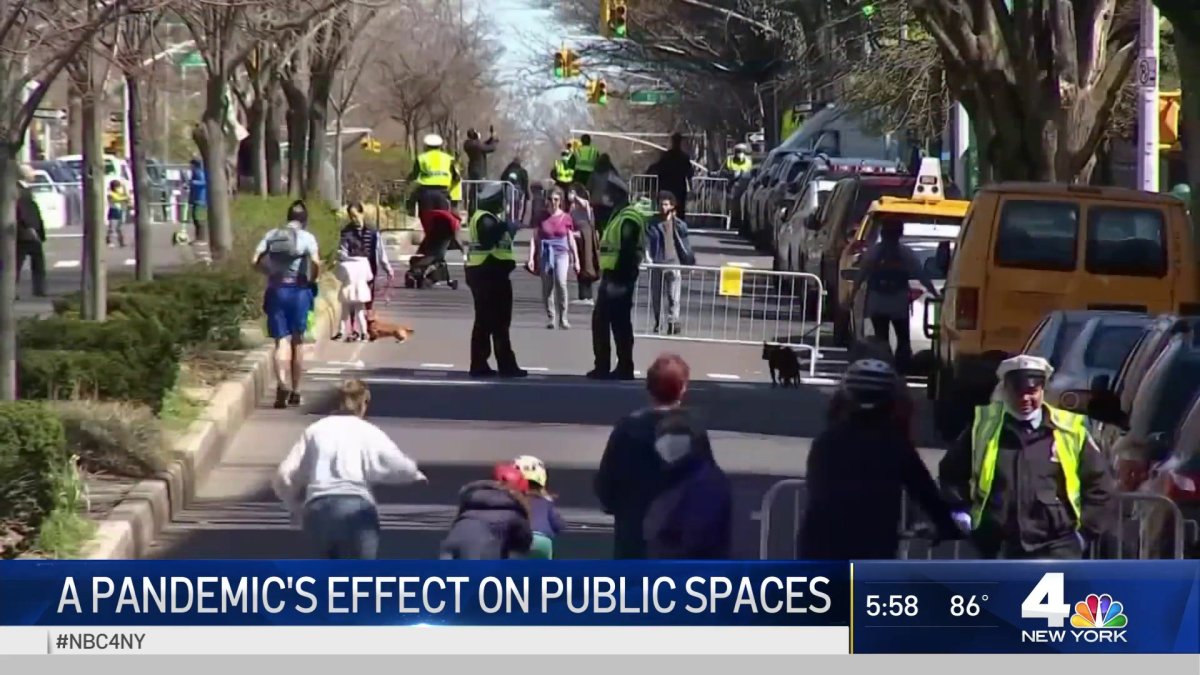
A glimpse back at design changes brought about by past pandemics may offer clues for the public spaces of the future. News 4’s Gilma Avalos reports.
The landscape of New York City is evolving: All restaurant dining has moved outdoors, kids are learning at home and their parents are out of the office. Many have said what is happening is unprecedented — but that may not be entirely accurate.
Sam Cochran, the features director at Architectural Digest, says we've been here before.
"The idea of a quarantine, while very novel to contemporary New Yorkers, there are many precedents for it throughout the history of New York," Cochran said.
Disease concerns have historically influenced design decisions and city planning. Take Central Park for example — in the 1800s, cholera thrived in the booming, up-and-coming metropolis New York was beginning to shape into. The architect of the park, Frederick Law Olmsted, called his vision for the space to be "the lungs of the city," a place to breathe easier at a time when cholera and other diseases ran rampant as people lived in very close quarters that were anything but hygienic.
Now, that same space has been used as an escape for many over the past few months, who felt trapped in their small apartments during the height of the outbreak in the city.
"I think that was a prescient description. I think as we've seen throughout the coronavirus pandemic, these public spaces have become a huge source of relief for everyday New Yorkers," Cochran said.
Pandemics can also be a catalyst for change. Improvements in slum districts, which were common in parts of Manhattan in the 19th century, were rooted in curbing disease, explained Sarah Henry with the Museum of New York City.
News
"Reformers looked at how housing for working class was affecting not only their quality of life, but the health of the whole city," Henry said.
The sanitorium movement was a response to the tuberculosis outbreaks. From that, the concepts of fresh air, light and clean spaces became more mainstream and were adapted into everyday life in the city. Other things that many today don't give a second thought to — even in your own home — were born out of health and safety precautions from years ago.
"Powder rooms provided an opportunity for people who were just entering a house to wash their hands," said Cochran.
To deal with the current pandemic, the city has already shown flexibility. Once congested streets have given way to pedestrians — making it easier to imagine a future with more public spaces. That future will involve retrofitting existing spaces, Cochran says, with things like touchless technologies and a return to traditional layouts in favor of open space concepts.
"Buildings are going to have to adjust to those new psychological realities in order to make workers, shoppers and diners all feel comfortable," Cochran said.